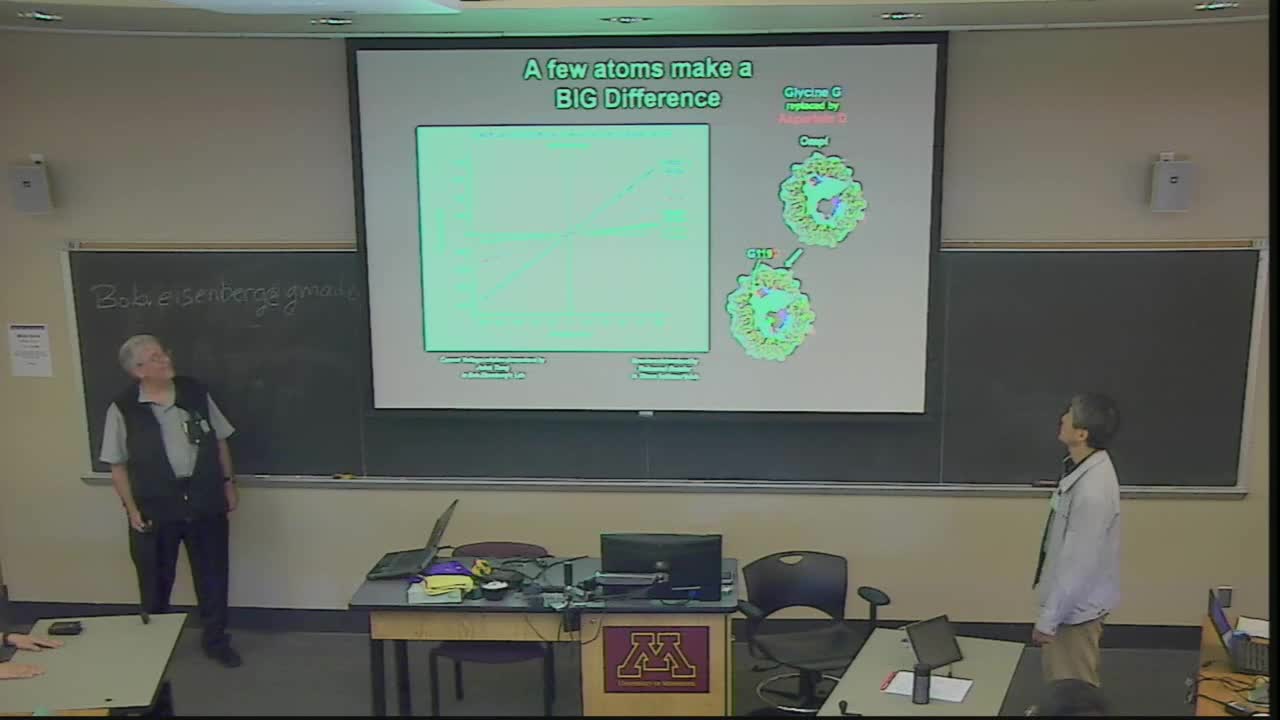Biological Solutions are Not Ideal: A Fermi Treatment
Presenter
July 21, 2015
Keywords:
- Biology
Abstract
Biology occurs in concentrated mixtures of ions that are far from ideal. Solutions are remarkably concentrated where they are most important. Multi-molar solutions (often >10M) are found in and near DNA & RNA, proteins, active sites of enzymes, transporters, and ion channels, as well as electrodes of batteries. Poisson Boltzmann treatments fail dramatically to deal with the upper bound of concentration produced by the finite size of ions and so cannot describe ionic solutions of life, or ions where they are most important.
Jinn-Liang Liu derived the Fermi distribution for mixtures of spheres of any diameter and density. We combined this distribution with electrodynamics and diffusion equations to produce PNPF (Poisson-Nernst-Planck-Fermi). PNPF yieds a fourth order Cahn-Hilliard like equation for concentrated ionic solutions with polarizable spherical water, and interstitial defects. This model accounts for the measured properties of calcium channels (so important in biology in general and the heart in particular). It accounts for the activity of bulk solutions of sodium and calcium using one unchanging parameter. The model computes efficiently in three dimensions (because of numerical methods developed for semiconductors applied to polarizable spherical water with an essential stabilization from the interstitial defects).
It is essential of course to use a fully consistent approach in which electrodynamics equations are always satisfied. Sadly, Markov and mass action models are local in their essence and so cannot deal with the global nature of current flow: Interrupting current far from an electrochemical reaction changes the local flow on an atomic scale as guaranteed by electrodynamics that demands perfect conservation of current everywhere always at any one time. We hope PNPF may be a useful replacement for Markov and mass action models.
We do not know the full range of utility (let alone validity) of the PNPF approach, but so far it deals easily with systems that we could not solve any other way.
